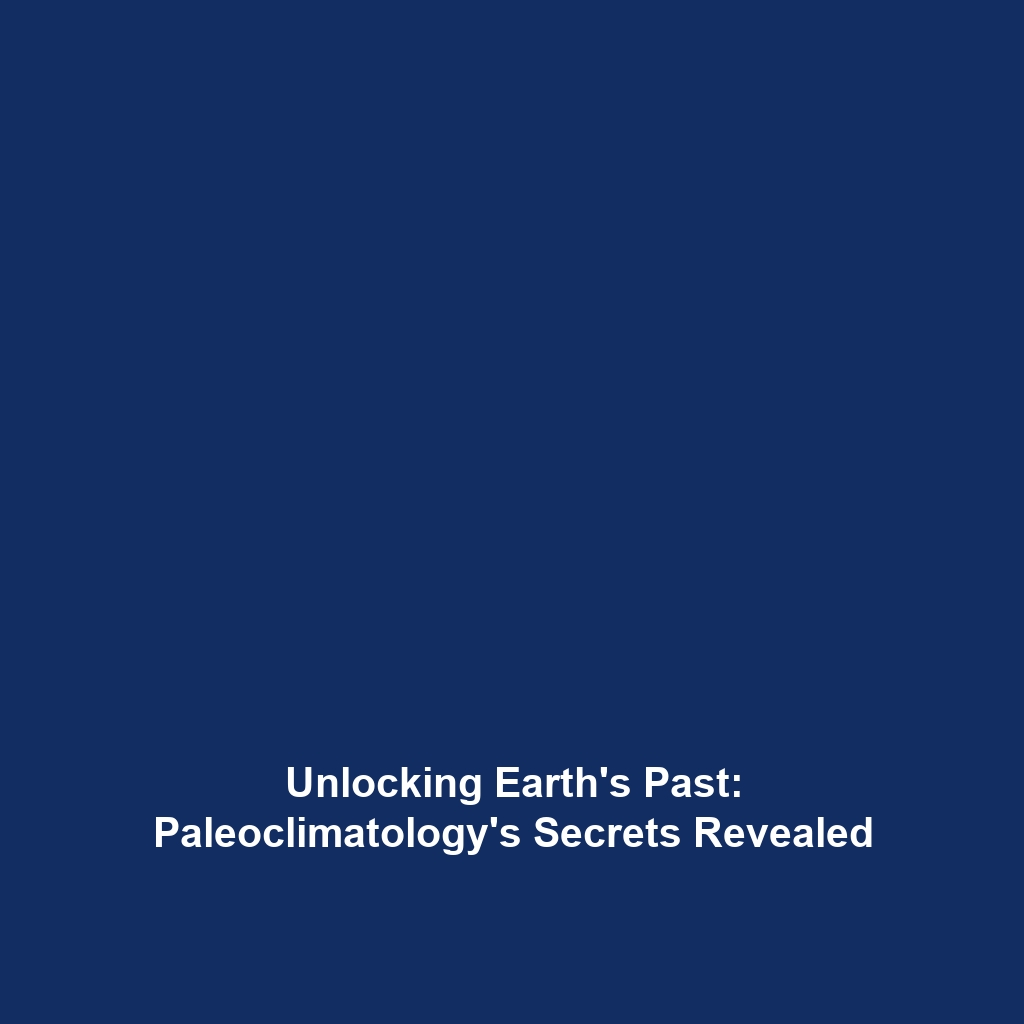Paleoclimatology: The Study of Ancient Climates
Paleoclimatology is a vital scientific discipline that investigates ancient climates by utilizing various proxies, including ice cores, tree rings, and sediment records. This field plays a crucial role in Climate History, as it helps scientists reconstruct climatic conditions of Earth’s past. By studying these natural records, researchers can gain insights into how climate has changed over millennia, providing essential context for current climate change discussions. Understanding Paleoclimatology is not only significant for historical context but also for predicting future climatic trends.
Key Concepts in Paleoclimatology
Paleoclimatology encompasses several key principles and techniques that contribute to our understanding of ancient climatic conditions:
Proxies in Paleoclimatology
Proxies are measurable environmental clues that allow scientists to infer past climatic conditions. The primary proxies used include:
- Ice Cores: Cylinders of ice drilled from glaciers and ice sheets that contain layers of trapped air bubbles, providing a historical record of atmospheric composition and temperature.
- Tree Rings: The growth rings of trees can indicate climatic conditions in a given year, such as temperature and precipitation levels.
- Sediment Records: Layers of sediment deposited over time in ocean and lake beds contain fossils and mineral compositions, reflecting past environmental conditions.
Applications and Real-World Uses
The applications of Paleoclimatology are vast and varied, particularly as they relate to Climate History. Significant real-world uses include:
- Climate Modeling: Historical climate data helps improve the accuracy of climate models which forecast future climate scenarios.
- Policy Making: Understanding past climate patterns informs policies aimed at mitigating the effects of climate change.
- Natural Resource Management: Insights into past climates aid in the sustainable management of ecosystems and biodiversity, especially in agricultural planning.
Current Challenges in Paleoclimatology
While Paleoclimatology offers valuable insights, it also faces several challenges and limitations:
- Data Gaps: There are areas with limited proxy data, making it difficult to reconstruct a complete climatic history.
- Calibration Issues: Different proxies may not directly correlate, complicating the interpretation of climate data.
- Technological Limitations: Continuous advancements are needed in analysis techniques to enhance accuracy and reliability.
Future Research and Innovations
Future research in Paleoclimatology is expected to drive significant innovations:
- Next-Gen Technologies: Advancements in remote sensing and high-resolution modeling are paving the way for more precise reconstructions of past climates.
- Interdisciplinary Approaches: Collaborations between paleoclimatologists and other scientific disciplines are expected to yield richer and more comprehensive climate histories.
Conclusion
In summary, Paleoclimatology is a foundational aspect of Climate History that offers critical insights into ancient climates through its use of proxies such as ice cores, tree rings, and sediment records. As we face the challenges of contemporary climate change, the relevance of paleoclimatic research becomes increasingly prominent. To stay informed about ongoing developments and advances in this field, explore our related topics on climate change and environmental science.
For further reading, check out our articles on Climate Change Impacts and Environmental Science Innovations.

